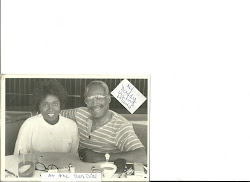Upon completing the communication survey I found that the results seemed to line up with what I perceived as my communication style. My husband one of the people I asked to survey my communication seemed to line up with what I perceived of myself. In the area of communication anxiety inventor I scored a 48 and my husband scored me at 50 both scores fell under moderate anxiety, which indicates that I feel somewhat concerned about a number of communication contexts, but probably not all. This mid-point level of communication anxiety is what we call situational. This outcome was not a surprise to me because I know that I don’t like public speaking and try to avoid having to do any. The second person that evaluated me was a colleague who scored me at 39, which is mild anxiety, which states that I feel a bit uneasy in some communication situations and somewhat more confident in other contexts. Communication does not seem to be something that I worry a great deal about. Her score the scores that my husband scored me at and I scored myself are not much different, they both captured the fact that I don’t like to public speak.
In the area of Verbal Aggressiveness again my husband and I scored in the same category. He scored me at a 59 and I scored myself at a 58, which is moderate aggressiveness, which states that I maintain a good balance between respect and consideration for others’ viewpoints, and the ability to argue fairly by attacking the facts of a position rather than a person holding that position. I was surprised that my husband scored me in this category, because I can sometimes be aggressive in our disagreements and do sometimes attack him when I disagree with him. My colleague scored me at 35, which is no aggressiveness, which states you never engage in verbal aggressiveness or personal attacks, even when desiring to influence other to your point of view. You are respectful to others, but you will back down rather than engage in persuasive conversation. I was surprised and not surprised at this score. I was surprised because I do tend to push my point of view when someone disagrees with me. I don’t back down. I was not surprised at this score because I make it a point to be respectful of others and I never would attack someone personally in the context of a work situation.
In the area of Listening styles again my husband and I scored the same my score was Group 1, People-oriented, which states you are empathetic and concerned with the emotions of others. This listening style helps you to build relationships, but it can interfere with proper judgment because you tend to be very trusting of others. While my colleague scored me in Group 2, Action-oriented, which states that I am business-like and I prefer clear, to the point communication that outlines a plan of action. Your efficiency is respected but may intimidate more sensitive listeners. Here is where I need to make a change because I feel that I need to be more empathetic in work place, because I need to be able to connect with families. The score of Action-oriented listening comes from my previous career in Corporate America. This type of listening style is not useful in my current line of work.
The insights I gained through this week’s assignments is that I need to become more empathetic in the work place because I need to consider the families that I am servicing. I need to be able to build strong relationships with them and having an empathetic listening style would be helpful in achieving this goal. The other insight that I discovered is that being aware of your own communication style helps you to improve communication with others because you become aware of areas that you need work in.
Reference:
Rubin, R. B., Palmgreen, P., & Sypher, H. E. (Eds.) (2009). Communication research measures: A sourcebook. New York: Routledge.
Rubin, R. B., Rubin, A. M., Graham, E. E., Perse, E. M., & Seibold, D. R. (Eds.) (2009). Communication research measures II: A sourcebook. New York: Routledge
